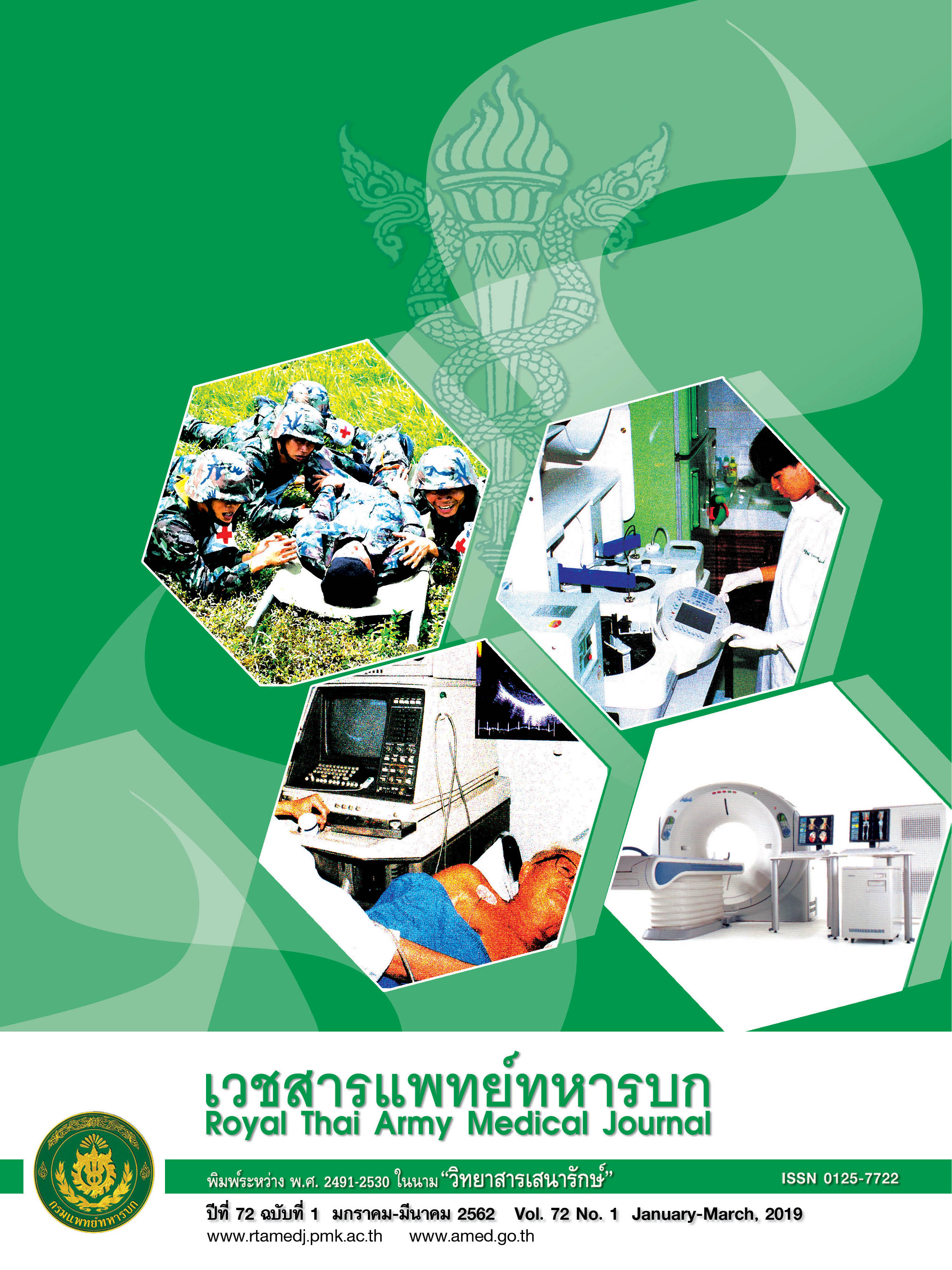ปัจจัยเสี่ยงและคะแนนความเสึ่ยงของการเกิดภาวะขาดออกซิเจนในทารกแรกเกิดในโรงพยาบาลกุมภวาปี จ.อุดรธานี
Main Article Content
บทคัดย่อ
บทคัดย่อ
บทนำ ภาวะขาดออกซิเจนของทารกแรกเกิดเป็นปัญหาสำคัญด้านสาธารณสุขสำหรับทารกแรกเกิด มีผลทำให้ทารกตายปริกำเนิดหรือ ทุพพลภาพและส่วนใหญ่มักเกิดจากสาเหตุที่สามารถป้องกันหรือแก้ไขได้ล่วงหน้า วัตถุประสงค์ เพื่อศึกษาปัจจัยเสี่ยงและคะแนนความ เสี่ยงต่อขาดออกซิเจนในทารกแรกเกิด วิธีการ กลุ่มศึกษาเป็นหญิงตั้งครรภ์จำนวน 100 คนที่มาคลอดบุตรโดยมีคะแนน APGAR ที่ 1 นาทีได้น้อยกว่าหรือเท่ากับ 7 ในขณะที่กลุ่มควบคุมเป็นหญิงตั้งครรภ์จำนวน 200 คนที่มาคลอดบุตรโดยมีคะแนน APGAR ที่ 1 นาทีมากกว่า 7 โดยข้อมูลถูกรวบรวมมาจากบันทึกทางเวชระเบียน ได้มีการเปรียบเทียบข้อมูลระหว่างกลุ่มการศึกษาและกลุ่มควบคุม ด้วยใช้สถิติเปรียบเทียบระหว่างกลุ่มด้วย t-test และ Chi-square ใช้การคำนวณทางสถิติด้วยวิธีการวิเคราะห์ข้อมูลแบบการถดถอยโลจิสติกแบบขั้นเดียวและการวิเคราะห์ข้อมูลแบบการถดถอยโลจิสติกหลายตัวแปรเพื่อหาปัจจัยเสี่ยงและสร้างคะแนนความเสี่ยง สำหรับภาวะขาดออกซิเจนในทารกแรกเกิดโดยใช้ Receiver operating characteristic (ROC) และ likelihood ratios (LR)
Downloads
Article Details
บทความในวารสารนี้อยู่ภายใต้ลิขสิทธิ์ของ กรมแพทย์ทหารบก และเผยแพร่ภายใต้สัญญาอนุญาต Creative Commons Attribution-NonCommercial-NoDerivatives 4.0 International (CC BY-NC-ND 4.0)
ท่านสามารถอ่านและใช้งานเพื่อวัตถุประสงค์ทางการศึกษา และทางวิชาการ เช่น การสอน การวิจัย หรือการอ้างอิง โดยต้องให้เครดิตอย่างเหมาะสมแก่ผู้เขียนและวารสาร
ห้ามใช้หรือแก้ไขบทความโดยไม่ได้รับอนุญาต
ข้อความที่ปรากฏในบทความเป็นความคิดเห็นของผู้เขียนเท่านั้น
ผู้เขียนเป็นผู้รับผิดชอบต่อเนื้อหาและความถูกต้องของบทความของตนอย่างเต็มที่
การนำบทความไปเผยแพร่ซ้ำในรูปแบบสาธารณะอื่นใด ต้องได้รับอนุญาตจากวารสาร


